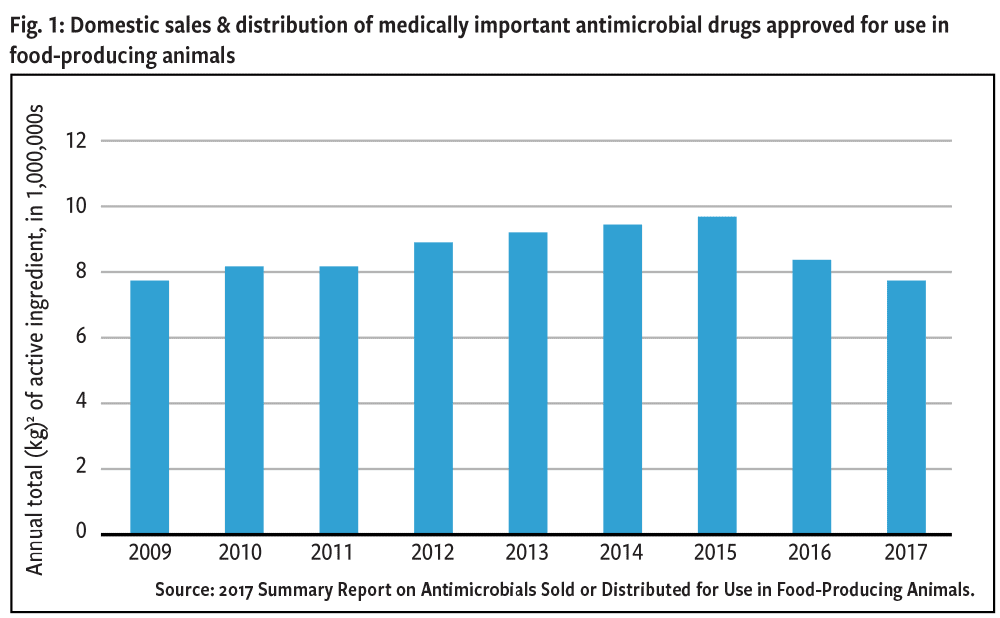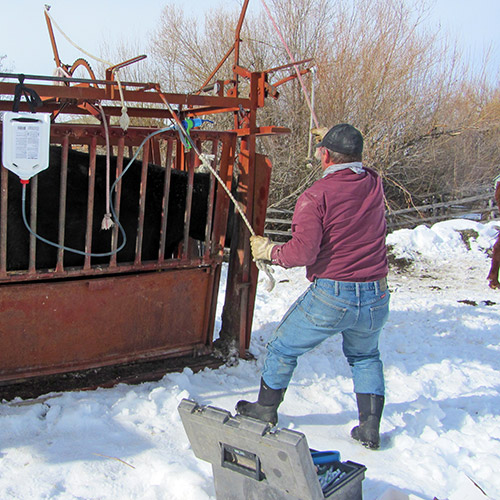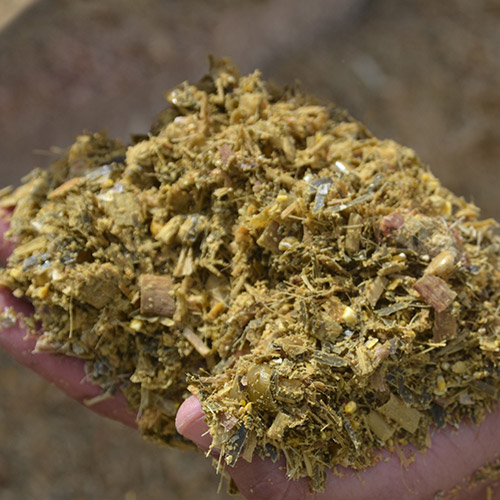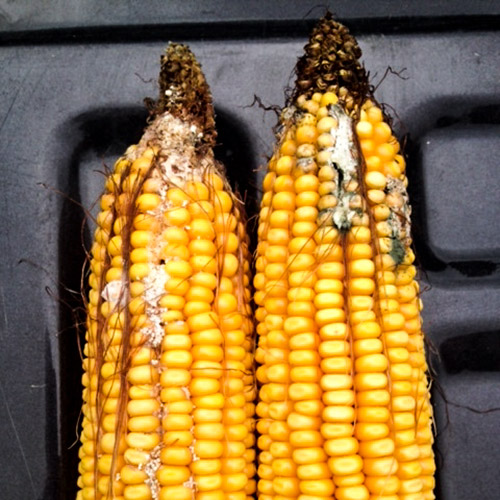Animal Antimicrobial Use Down
FDA releases report showing antimicrobials distributed for food-producing animals declining for two years.
The U.S. Food and Drug Administration (FDA) announced that domestic sales and distribution of all medically important antimicrobials intended for use in food-producing animals decreased by 33% between years 2016 and 2017. The 2017 Summary Report on Antimicrobials Sold or Distributed for Use in Food-Producing Animals also shows that domestic sales and distribution of all medically important antimicrobials decreased 41% since 2015 (peak year of sales/distribution) and decreased 28% since the first year of reported sales in 2009.

While sales data do not necessarily reflect actual antimicrobial use, the reduction in sales volume observed in 2016 and 2017 is an important indicator that ongoing efforts to support antimicrobial stewardship are having a significant impact.
The 2017 Summary Report is the first report to include data submitted after the full implementation of Guidance for Industry (GFI) #213. Based on recommendations in GFI #213, all production uses (e.g., growth promotion, feed efficiency) of medically important antimicrobials in the feed or drinking water of food-producing animals were eliminated, and such drugs can now only be used for therapeutic purposes under veterinary oversight.
Sales and distribution data provide insight regarding the quantity of antimicrobial drugs entering the marketplace. The substantial reduction in the quantity of these drugs sold or distributed in 2017 demonstrates that ongoing stewardship efforts, including those initiated by FDA and other key stakeholders, are having a measurable impact.
At the same time, it is critical to remember that FDA’s primary goal with initiatives like GFI #213 and the Center for Veterinary Medicine’s five-year action plan is not to reduce antimicrobial sales volume, but rather to support the implementation of good antimicrobial stewardship practices to slow the development of antimicrobial resistance. Optimizing how antimicrobial drugs are used and limiting their use to only when necessary to treat, control or prevent disease will help to preserve the effectiveness of these drugs for fighting disease in both humans and animals.
Although sales data provide insight regarding antimicrobial drugs entering the marketplace, it is also important to consider additional sources of information when assessing progress of efforts to foster judicious antimicrobial use, including actual-use data, animal demographics and animal health data, and data on resistance. The agency continues to work with federal, academic and industry partners to obtain more information about how, when and why animal producers and veterinarians use medically important antimicrobial drugs in food-producing animals.
The FDA plans to publish a report in 2019 that integrates and analyzes these other data sources to more fully assess the progress of antimicrobial stewardship efforts.
When analyzing the report, readers should consider:
- Sales and distribution information does not represent actual use of the products. It is important to acknowledge that these data are sponsor estimates of product sales and are not intended to be a substitute for actual usage data. For example, veterinarians and animal producers may purchase drugs, but never actually administer them to animals, or they may administer the drugs in later years.
- Before making a direct comparison between the quantity of antimicrobial drugs sold for use in humans and that sold for use in animals, you should consider:
- There are many more animals than humans. For instance, there are approximately 320 million people in the United States, while USDA records indicate that about 9 billion chickens are slaughtered annually.
- There are differences in physiology and weight between humans and animals: the average adult human weighs 182 pounds (lb.), while a beef steer weighs about 1,363 lb.
- Different animal species metabolize drugs differently, meaning that some may require more of the drug to be effective, or they may need to be treated for a longer period of time.
While the 2017 annual summary report demonstrates measurable progress, and the FDA appreciates all the efforts by stakeholders, more work is needed to address antimicrobial resistance. CVM’s five-year action plan outlines additional steps that the agency intends to take to foster antimicrobial stewardship in veterinary settings.
Editor’s note: This article is from the FDA. More information resources can be found at https://bit.ly/2S5KQJm.



















